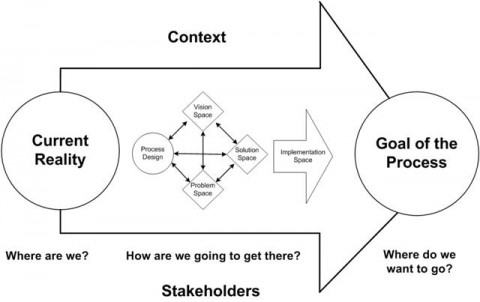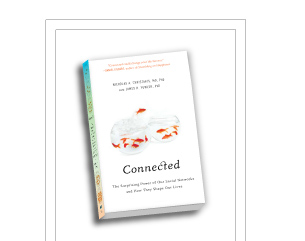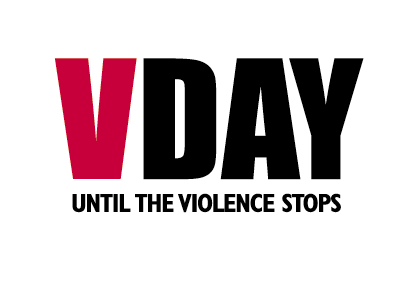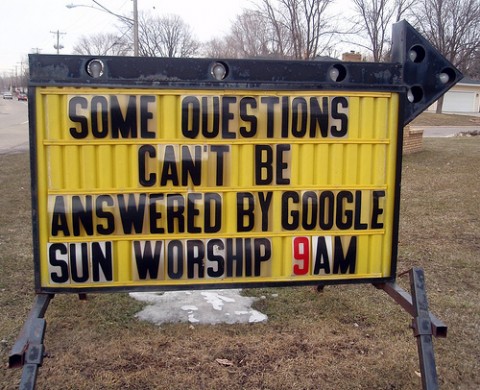Blog
February 23, 2010
Part 1 of 2, go here for Part 2.

|Photo by LadyDragonflyCC|http://www.flickr.com/photos/19646481@N06/4332176853/|
Love as the practice of freedom has been on my mind these days. My good friend Cyndi Suarez, who is the co-director of Northeast Action, recently shared a bell hooks essay by the same title – I appreciated Cyndi’s e-mail:
“I was thinking today on just how much social change movements reflect the dominant culture. I just finished rereading an old-time favorite essay by bell hooks and had to share it with you. I feel it is as pertinent now as when I first read it 15 years ago. I wonder what would change if at least some of us focused on building love rather power.” Read More
February 22, 2010
In the upcoming edition of the Stanford Social Innovation Review, IISC gets a mention for our work with both Grantmakers for Effective Organizations and their Change Agent Project as well as the work we did with our client The Davis Foundation and their project Cherish Every Child. In each instance IISC partnered with our client by providing them a collaborative approach and architecture that scaffolded them in their pursuit of their collaborative goals.

Read More
February 19, 2010
One of my passions is related to what happens when two of my passions fuse together: art and social justice. I thought I’d share some justice-related poems, and ask you to share some of yours – artists (whether poets, musicians, painters, actors, dancers, or others) that inspire you, or movements for change you know of, in a social-justice-kind-of-way.
February is Black History Month, so I’ll share two poems of the great Langston Hughes (b. February 1, 1902 – d. May 22, 1967). A poet, novelist, playwright, short story writer, and columnist, Hughes was one of the earliest innovators of a new literary art form: jazz poetry. The poems that follow reflect justice issues of his day. Read More
February 18, 2010

|Photo by Reenie-Just Reenie|www.flickr.com/photos/flickrchickr/2589059730|
In a previous post I referenced the work of Marcial Losada, which indicates that elevated group performance is associated in part with a high degree of “positivity.” Specifically, groups that excel in terms of innovation and productivity tend to be those where there is at least a 5:1 ratio of positive to negative interactions. The importance of this ratio has been further highlighted by some other findings and experiences I have had working with community-based activists.
Read More
February 17, 2010

I’ve been reading, with great fascination, the book Connected: The Surprising Power of Our Social Networks and How They Shape Our Lives by Nicholas A. Christakis and James H. Fowler — and I read a fascinating article in the New York Times yesterday morning about the rise of the Teaparty Movement across the US. And I’m fascinated by the intersections.
I’d heard about Christakis and Fowler’s research a while ago – when they announced that things like obesity and love move through networks. Upon closer reading, I’m fascinated that there are, generally, three degrees of influence. That we are affected by our friends (one degree), by the friends of our friends (two degrees) and by the friends of their friends (three degrees). Beyond that, there’s not much that’s measurable. But at three degrees of influence, we are deeply influenced by a large number of people! And it’s who are in many ways local to us (though certainly that is changing). Read More
February 16, 2010

I know I’m coming late to the party, but I saw the Vagina Monologues for the first time this weekend and I was blown away by it. Rather than writing yet another raving review of what evidently is a deeply moving work of art, I want to make a comment on the movement that it has unleashed.
I saw the play as produced by MIT undergraduate students who did it in concert with thousands of others around the world – I think it most appropriate to let V-Day speak for itself: Read More
February 12, 2010
Its been a week of provocative, profound and promising experiences on behalf of IISC. I’ve been on the road — learning, training, networking and promoting our work. Here’s a rundown of some of the great ideas, people and organizations I’ve had the honor of connecting with these last few days:
February 11, 2010

|Photo by Mikl Roventine|http://www.flickr.com/photos/myklroventine/2372327933/|
My wife and I recently missed one of our favorite church services of the year – The Question Box Service. For a few weeks leading up to this particular Sunday, parishioners are typically invited to submit questions for the ministers to respond to. These questions can be of any number of varieties – philosophical, ethical, political, personal, whimsical – and tend to be very wide ranging. The answers to selected questions become that day’s sermon. As interesting and entertaining as it is to hear the clergy offer their spontaneous reflections (they dress down for the occasion, doffing their robes and sitting crossed-legged on stools in front of the pulpit, a la talk show hosts), I find the questions themselves fascinating, especially when artfully phrased. Just the reading of the card can elicit a ceremonious “oooh” or “ahhh” from the listeners.
Read More
February 10, 2010
I’ve been thinking a lot about why people love to hate government, and why I just can’t bring myself to hate it, too. I hold tightly to the notion of government “of the people, by the people and for the people” and want to hold it accountable to serving its role to “establish justice, insure domestic tranquility, provide for the common defense, promote the general welfare, and secure the blessings of liberty to ourselves and our posterity.”
To the people who say (as I heard recently on the news) “I want government out of my life and out of my pocket!”, I say, see how far you get without roads, bridges, schools, water, sewer, fire and police forces, courts, public transit, public parks, libraries, and the like. To those who say (as I also heard recently) “I was raised that if you see something that needs to be done you just do it. No whining. No waiting for government. You just do it.” I have a few questions. Does that include paving a pothole? Educating a neighbor with special needs? Making books available to children and adults doing research? Building an extension to a road or transit system? Ensuring that the air and waterways are not polluted? Providing shelter, health care and other safety net supports for people in need? Making sure that everyone does their part to avert a climate disaster? You get my point. As a tax payer, I’m getting a pretty good deal for what I pay. It would take more than 80 years of paying our property taxes to exceed just the cost of educating three sons in private schools!
Read More
February 9, 2010

|Photo by Portable Church|http://www.flickr.com/photos/portablechurch/3789838110/|
It sounds simple, but I increasingly find the idea that “happiness matters” an important principle to remember. Understanding that happiness matters gives us a great lens with which to evaluate our efforts. As I go about the work of social transformation – am I happy? Are the people I work with happy? I hope it’s obvious that I’m not equating happiness with the cheap thrills that are abundantly available to us in this age of hyper-capitalism. I’m talking about the happiness that is defined by a sustainable sense of contentment.
I am talking about being happy even as we engage the often challenging work of social transformation in a world that desperately needs it. I often say to activists that miserable faces of martyred frustration often are, in and of themselves, the best argument against being in movement with those that want a better world. I contrast this experience to the abundance of song and dance that defined the struggle to put an end to South African Apartheid.
Read More
February 8, 2010
My colleagues and I went to see Daniel Pink when he came to speak in Cambridge. We had all read his book “A Whole New Mind- Why Right-Brainers Will Rule The Future,” and found that it gave us a framework and vocabulary to describe what we were finding in our work, which is that we are not only straddling era’s, we are straddling between the sides of our brains. We are discovering that in the work of social change most of the ideas, the data and the numbers are all available to solve many of our most intractable problems. What’s missing in our approach as outlined by Pink in “A Whole New Mind” resides in the right side of our brain: inventiveness; empathy; meaning and our capacity to design our way to wholeness.
Read More
February 4, 2010

|Photo by nathanborror|http://www.flickr.com/photos/sketch22/3054286601/
With the dust now fairly settled from President Obama’s first State of the Union Address, I feel like it’s safe to offer a few comments here without being labeled an aspiring pundit. IISC friend and fellow network-phile Bill Traynor of Lawrence CommunityWorks captured some of my own feelings initially – impressed by the speech, on board . . . for now. Coming into that evening I was concerned about what I had been picking up as a big push of the “Obama brand”, leading me to ask along with Naomi Klein whether the man in the Oval Office is more about symbolic gesture than substantive change. Suffice to say that I don’t have the behind-the-scenes knowledge to confidently declare how much is actually getting done. But to the extent that anything in front of the curtain matters, and we know at least some of it does, I came away with some real adaptive leadership lessons from the SOTU Address.
Read More








